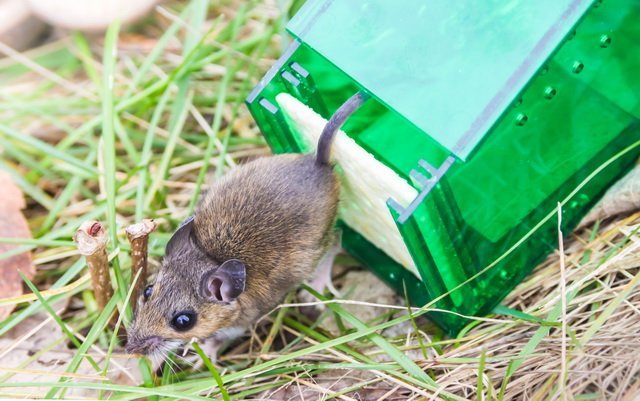Welcome to our in-depth guide on humane mouse trapping!
Whether you’re a seasoned DIY’er or new to home pest control, this guide is designed to walk you through the process of humanely catching and releasing mice.
Say goodbye to guilt and hello to a kinder, safer approach to rodent control.
Introduction
Dealing with mice can be stressful, but it doesn’t have to be harmful.
Humane mouse traps offer a compassionate solution, ensuring you can rid your home of rodents without causing them harm.
In this guide, we’ll cover everything from choosing the right trap to releasing your furry captives safely.
Understanding Humane Mouse Traps
Humane mouse traps differ significantly from traditional traps. They are designed to capture mice without injuring them, usually featuring a baited enclosure that shuts once the mouse enters.
Key Advantages of Humane Traps:
- Ethical Considerations: Avoids the ethical dilemmas associated with killing rodents.
- Reuse and Cost-Effectiveness: Durable designs mean these traps can be used multiple times, making them a cost-effective solution.
- Safety for Other Household Members: They are safe to use around children and pets, as they don’t rely on hazardous chemicals or potentially harmful mechanisms.
Choosing the Right Humane Mouse Trap
Humane traps come in various shapes and sizes. When selecting a trap, consider these factors:
- Size and Design: Choose a trap that’s spacious enough for the mouse, ensuring it won’t be harmed or overly stressed.
- User Friendliness: Opt for a trap that is simple to set, bait, and clean.
- Durability and Material: A well-built trap made of sturdy materials offers better longevity and value for money.
Preparation for Setting Up Your Trap
Before setting up your trap, it’s important to consider the following:
- Wear Gloves: Handling traps with gloves prevents human scent transfer and protects against potential diseases.
- Selecting Effective Bait: Mice are particularly fond of peanut butter, oatmeal, or fruits. These can be more enticing than traditional cheese.
- Identifying High-Traffic Areas: Look for signs of mice activity like droppings, gnaw marks, or greasy trails. Placing traps in these areas increases the chance of capture.
Setting Up Your Humane Mouse Trap
- Bait Placement: Put a small amount of bait in the designated area of the trap.
- Arming the Trap: Carefully follow the manufacturer’s instructions to set up the trapping mechanism.
- Strategic Placement: Ensure the trap is placed in a quiet, secluded area with signs of mouse activity. The trap should be stable and not in a position where it can be knocked over or disturbed.
Learn all about Mouse Trap
Deep dive this topic with hand-picked articles just for you
Monitoring and Maintenance
- Regular Checks: Inspect your traps at least once a day. Mice left in traps for too long can become stressed or dehydrated.
- Cleaning and Upkeep: Disinfect the trap after every use using a mild detergent. This helps eliminate odors that may deter other mice.
What to Do When You Catch a Mouse
Upon capturing a mouse:
- Considerate Release: Choose a release spot away from residential areas, preferably near fields or wooded areas. Ensure it’s away from your home to prevent the mouse from returning.
- Abiding by Laws: Familiarize yourself with local regulations regarding the release of wildlife.
Preventing Future Infestations
Long-term Prevention Strategies:
- Seal Gaps and Entry Points: Mice can squeeze through tiny spaces. Use steel wool or caulk to seal gaps around pipes, windows, and doors.
- Maintain Cleanliness: Reduce food and water sources that attract mice. Store food in airtight containers and regularly dispose of garbage.
- Regular Home Inspections: Vigilance is key. Periodically inspect your home for signs of mice and address any potential attractants immediately.
Conclusion
With this guide, you’re now equipped to tackle mouse invasions in a humane and effective manner.
Humane mouse trapping is not just about dealing with a pest problem; it’s about doing so with a conscience.
By following these steps, you’re contributing to a kinder, more ethical approach to pest control.

Latest Comments Click to leave a comment